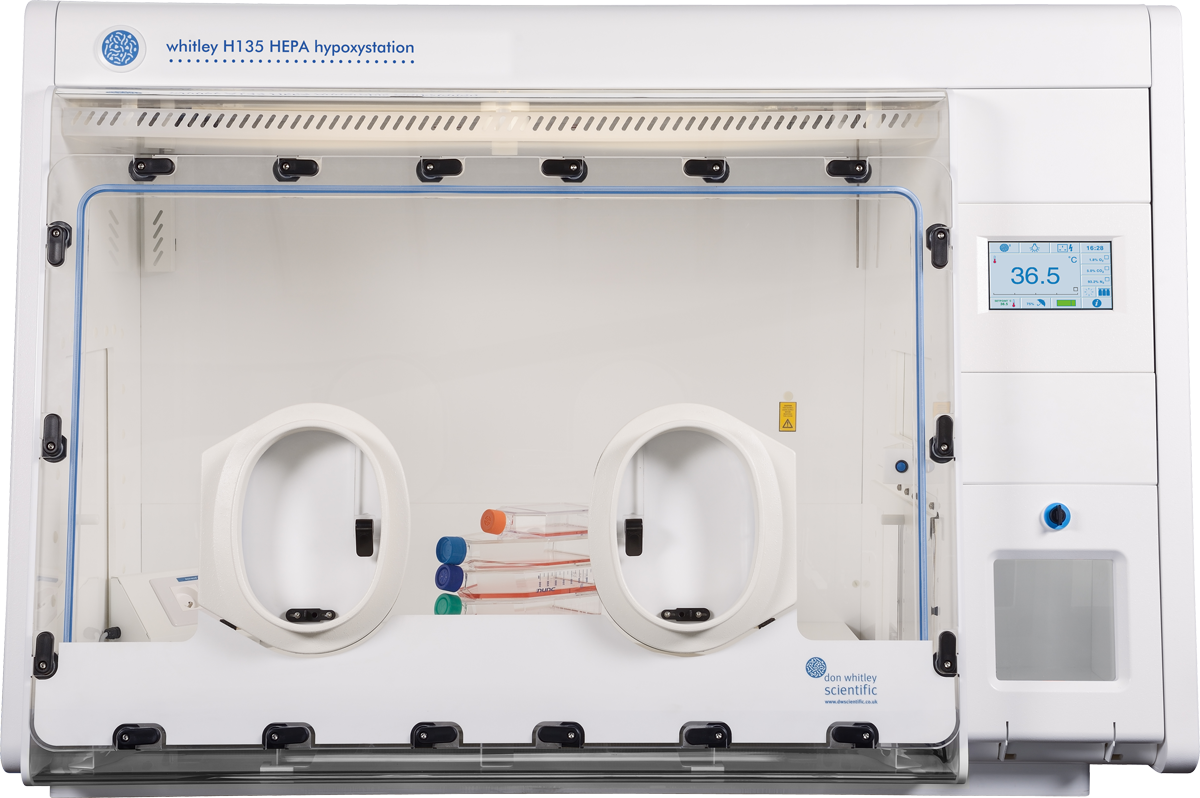
Abrupt changes in temperature and oxygen levels can significantly alter the many oxygen-sensitive signalling pathways that sense and react to the cellular micro-environment. Don Whitley Scientific have developed a range of hypoxic workstations large enough to accommodate many instruments which would previously have been confined to the bench; minimising the need to transfer cells between bench and workstation which would result in exposing them to raised levels of oxygen.
The H135 HEPA Hypoxystation and i2 Instrument Workstation have larger footprints and optional shelving to provide ample space for both instrumentation and culturing. The removable front facilitates transfer of equipment in and out of the workstations. Precise control of temperature, oxygen, carbon dioxide and humidity mimic the physiological environment, ensuring true in vivo cell behaviour.
Working with manufacturers of diverse laboratory instruments, Don Whitley Scientific have validated a number of options for analysis and imaging of cells:
*
 Incucyte® live-cell analysis: the Incucyte ZOOM comfortably fits inside the H135 (pictured), enabling real-time quantitative study of growing cells inside the hypoxic incubator environment
Incucyte® live-cell analysis: the Incucyte ZOOM comfortably fits inside the H135 (pictured), enabling real-time quantitative study of growing cells inside the hypoxic incubator environment
* Microscopes: a range of microscopes can be placed inside the controlled workstation environment, allowing users to image cells during incubation
* Seahorse XFe Analyzer: a modified version of the H135, the i2 Instrument Workstation, has been customised to accommodate the specific requirements of the XF Analyzer for metabolism assays.
We are happy to discuss your unique sizing and environmental needs; please contact us today to discuss any custom requirements.
What our users are saying:
“Due to the utility of having the Incucyte S3 live imaging system inside our H135 Workstation, we have expanded our collaboration portfolio exponentially. We have performed cancer biology, immunology, neuro and vascular physiology, and many other types of experiments in our system under controlled atmospheric conditions. The large volume of the H135 is key to having enough room for both the imager and sufficient workspace to carry out experiments.”
– Dr Adam Case, Assistant Professor, Dept. of Cellular and Integrative Physiology,
University of Nebraska Medical Center, Omaha, NE.


 en
en

 English
English